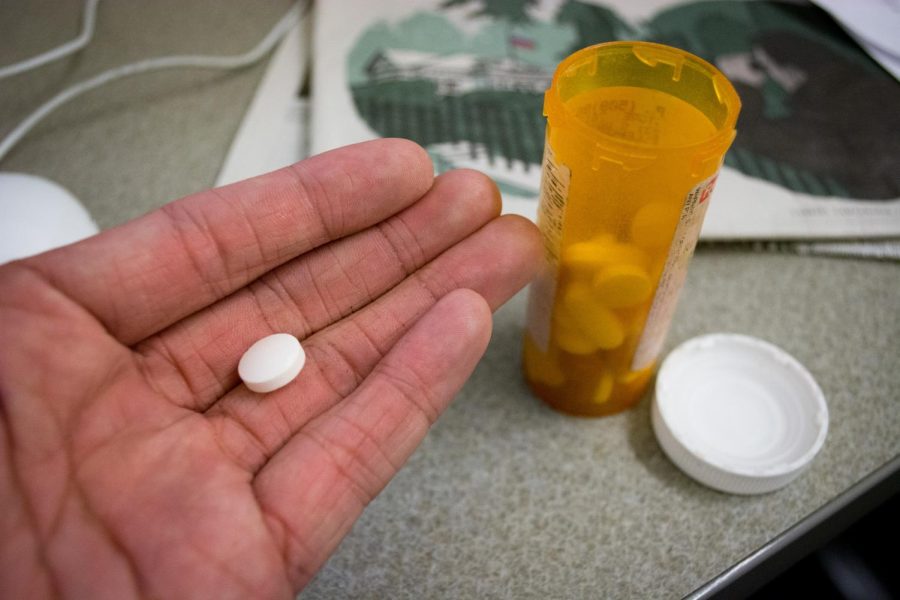BY Kyle Fenton
Contributing Writer
Kittitas County and the surrounding area is a premier place for commercial agriculture, whether you are producing hay, grapes, apples or marijuana.
Water is one of the many concerns in the world of legal marijuana. The Kittitas Reclamation District (KRD) supplies water for approximately two-thirds of all the irrigated acres in Kittitas County, around 60,000 acres.
The looming issue is that the KRD is a branch of the Bureau of Reclamation, a federal facilitator of the nation’s water. The agency is leery of talking about marijuana because the federal Drug Enforcement Agency still lists it as a Schedule 1 drug, which means it is illegal federally and is classified as being highly addictive and as having no medical or safe level of use. Other Schedule 1 drugs include heroin, LSD, mescaline and the rave drug MDMA, known as Molly.
Because of the conflict between state and federal laws, KRD is stuck in a gray area, said Ken Hasbrouck, manager at KRD. “It is technically not allowed for marijuana growers to use our water.”
Hasbrouck added that until KRD gets a written policy from the bureau, then the agency could not enforce what people are doing with the water from KRD’s canals.
“Once they deliver, it becomes the landowner’s water,” he said.
Mike Graham, proprietor of Natural Mystic Farms, which hopes to obtain a marijuana growing license, owns a 10-acre plot of land in Kittitas. On this land he produces hay and is getting his facilities ready to produce marijuana. It would be very tough for the KRD to regulate whether Graham was using the KRD water to feed his hay crop or his marijuana crop.
But there are other issues with KRD water, Graham said.
“I would be reluctant to use KRD water, considering the algaecides and other pesticides they treat their canals with,” he said. “Hand watering and drip-irrigation systems used for marijuana production are much more efficient than other commercial agricultural water use, and we are simply not permitted to use chemical pesticides that are used without hesitation in conventional agriculture.”
Doc Hansen, planning official for Kittitas County Community Development Services, said he’s heard rumors that marijuana producers would purchase water from private dealers and have it freighted in.
Hansen also hinted that if marijuana growing were a “proven industry,” then the KRD could consider supplying it with water. But with the Liquor Control Board not having issued any licenses yet, he said, it isn’t currently a working industry in Kittitas County.
During a tour of Graham’s marijuana farm, he explained his main concerns with this future industry.
“Marijuana has gotten a bad rap for wasteful and irresponsible production, but with the newly legal and regulated system, many of the problems with illegal and indoor production can be eliminated,” Graham said. “I believe the consumer will favor sustainable sun-grown marijuana when the legal system gets going and people learn the environmental consequences of indoor production.”
The Washington State Liquor Control Board (WSLCB) has classified indoor-grown marijuana as an energy-intensive product by weight, using on the order of 2,000 kilowatts per hour, per pound of product. In comparison, aluminum requires only about 7 kwh per pound. However, the high unit value of marijuana (approximately $2,000 a pound at wholesale prices), compared to aluminum at just 90 cents a pound, means energy is a much smaller fraction of product cost. When the final value of the products is taken into consideration, it takes 8,000 kwh to make $1,000 worth of aluminum, versus 1,000 kwh for $1,000 of marijuana.
Graham plans to grow his marijuana in “hoop houses,” or a simple green house. He said this will be an environmentally and eco-friendly alternative compared to the indoor growing operations you will see on the rainy west side of the state.
During the tour of Natural Mystic Farms, Graham pointed out the hoops marijuana producers will have to jump through to get ready for the WSLCB to do its final inspection before issuing licenses.
Some of these hoops are eight-foot-high, sight-obscuring fences surrounding the grow area (with appropriate buffers), infra-red cameras covering every square foot inside the fence along with external security views, DVR machines capable of backlogging these cameras for 45 days and many other issues that regular agricultural businesses do not have to worry about.














